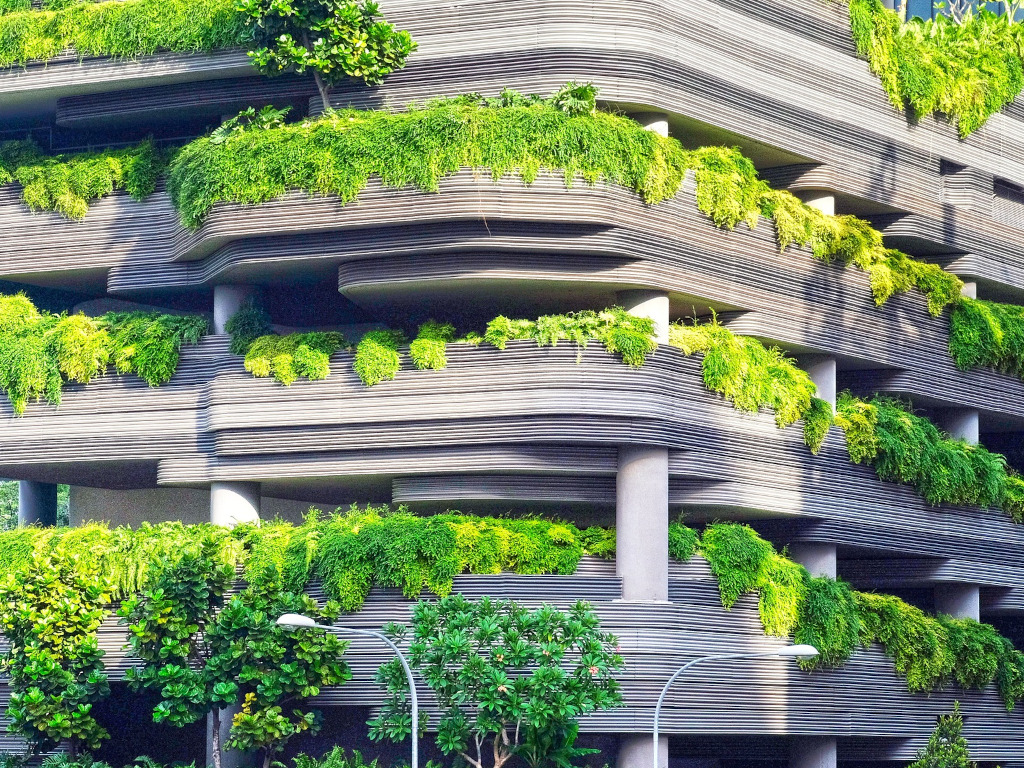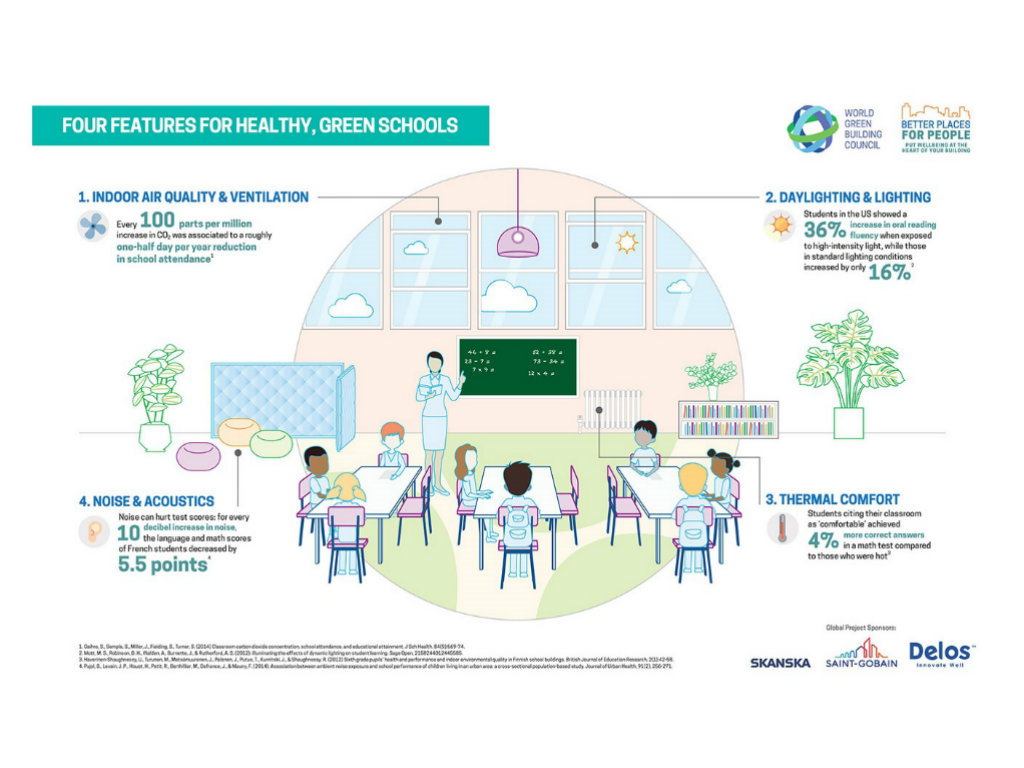“Green” Interior Design – How to Get Sustainable Solutions?
Source: eKapija
 Wednesday, 09.12.2020.
Wednesday, 09.12.2020.
 20:58
20:58
 Wednesday, 09.12.2020.
Wednesday, 09.12.2020.
 20:58
20:58
Illustration (Photo: Pixabay/Free-Photos)

Dragana Korica, Executive Director of the Serbia Green Building Council – SrbGBC, says this at the beginning of her interview for eKapija. She adds that green building promotes those who benefit the users and that’s where the story about building better places for people begins:
– Starting from the fact that we spend 90% of our time indoors, it is clear why the interior, in addition to being well designed, needs to meet the green principles in order to be beneficial to the users. Also, a green sustainable approach can contribute to a healthier living environment. Focusing on the topic of the newsletter, green and sustainable interior, there are four major criteria which need to be met from the aspect of the comfort and health of the users: thermal, visual, acoustic and, perhaps the most important, due to the global health situation we are all facing, air quality.
Characteristics of healthy and green schools. Project “Better Places for People”, World Green Building Council

Goran Trenevski of Saint-Gobain, a member of SrbGBC, says that, in the sense of interior design, it seems that there are no defined guidelines or norms. What does exist is the degree of thermal insulation / energy efficiency of a facility and sound protection, where old norms are used.
Danijela Ostojic of Gudmark Group, also a member of SrbGBC, says that, considering that air quality in the interior space has become very important, from the perspective of those from the industry of paints for the finishing works in construction, it entails the use of materials:
– which do not require frequent maintenance cycles;
– which have a low percentage of volatile organic compounds (VOC);
– which do not cause allergic reactions in people prone to allergies or those who have asthma.
Alumil is a company which extrudes aluminum profiles for the production of joinery. They say that they comply with green building standards through the development of thermally insulated systems of minimal dimensions, which at the same time enable the implementation of wider glass packages, which enables greater energy savings.
In what way does modern interior design take care of environmental protection?
– Overheating in the summer has become increasingly intensive in the past years, which creates the need for cooling, that is, a mechanical intervention which can then lead to an increase in the emission of carbon due to the energy consumption. Also, those cooling technologies emit large quantities of HFC, thereby also directly influencing the climate change – Dragana Korica notes.
Marija Andjelic of Knaufinsulation, a member of SrbGBC, believes that it is very important for the materials that are used to have certain certificates which guarantee a minimal emission of volatile organic compounds (VOC), which can endanger the health of the user of the space in larger quantities.
From the aspect of environmental protection, the topic of sound protection is becoming more current as well, as shown by the systems of ranking of green buildings, where sound protection is treated as a special category.
Goran Trenevski says that, when investors to whom the factors of designing in line with the norms that pertain to protection appear, one of the widely accepted norms is used, LEED, Breeam or something similar. He also points out that this is still not a rule in these areas.
Danijela Ostojic explains that the confirmation of the expanded criteria for paints is given by accredited laboratories which issue the M1 certificate, EU Ecolablel, Allergy Label (for example, Tikkurila Harmony or Joker):
– We need to observe all materials from two angles. The first, of course, is what kind of influence the materials used have on our health, and the second is the process of the production of the material itself – says Ratka Antonijevic of Baumit, another member of SrbGBC.
When designing the interior, the designer aims to improve the quality of the space and with that the quality of life of the people who stay in it, according to Ivana Petronijevic. She says that this is primarily achieved through planning new window openings or expanding the existing ones, which increases the amount of natural light in the space.
How can we make the interior energy efficient?
The project which entails user control of the heating, cooling and humidity in the space, in order to ensure the optimal individual comfort in the operating phase of the building, simultaneously achieves the maintenance of energy efficiency, while taking care of the environment.
Thermal comfort, of course, also depends on geographical and cultural factors and a subjective feeling, or the purpose of the space and that is why the temperature spans are very different in different corners of the world (ASHRAE standard known in Serbia: ASHRAE Standard 55-2017, recommendation 19 and 28 degrees Celsius), she reminds.
Humidity control also influences the comfort and prevention of the spreading of diseases, so the recommendation is for the relative humidity not to be lower than 65% in order to reduce the likeliness of the occurrence of the conditions that can lead to the development of microbes (ASHRAE standard 62.1-2016).
If the facility is new, the interior is already within the norms of the current regulations, says Goran Trenevski. But if we are talking about subsequent adaptations or reconstruction within the existing facilities, each adding of the insulation raises the energy grade.
At Baumit, they believe that, in the sense of regulation of the climate of the interior, everything depends on the first 2 cm.
When it comes to the application of aluminum in choosing the joinery or façade systems, whether we are talking about the designers or the end-users, Ivana Petronijevic says that it is increasingly frequent. She also reminds that many banks, within their programs for the crediting of natural persons, have implemented the concept of favorability for the choice of green-sustainable materials.
To what extent are sustainable materials used in modern construction in Serbia, that is, in designing the interior?
It happens much more frequently that certain materials are used in the interior which are not only not sustainable, but also very toxic and dangerous to the users’ health in the long term. These materials emit a large concentration of VOC, which can have a very negative effect on the health of the people who are staying in this kind of an interior for a long time. These compounds are mostly found in organic binders, adhesives and coatings – Marija Andjelic warns.
On the other hand, in the most developed European countries, not only are safe and recyclable materials used, but the producers compete to produce materials that affect the people and the environment the least, keeping in mind the process not just from the moment of the production to the moment of the disassembly, but also from the extraction of the raw materials for the production to the moment of the potential reuse (circular economy and life cycle analysis – LCA).
– It’s hard to present any kind of statistics in that sense. We are still a country that uses brick products. The interior as such is, however, in a kind of advantage. For example, the use of dry systems in the interior has a great effect on everything we talked about previously – says Goran Trenevski.
Danijela Ostojic says that the projects which are certified in Serbia in line with the green standards (LEED and BREEAM), require the implementation of sustainable materials:
– Changes are happening to us slowly, but there’s still a lot of room for improvement.
Dragana Korica reminds that, slightly over two years ago, the guidelines for sustainable materials were defined in the Law on Construction Products.
– If we start from the fact that a reused material is at the same time sustainable, we can conclude that, on the level of interior details, there are good examples of products, rather than materials, in the form of a reuse of a certain element in a space, especially in the service industry. At the moment, it is more up to the producers of the materials, which can have a recyclable percentage in the products, or the production itself is green/sustainable – she says.
Companies:
 Savet zelene gradnje Srbije
Savet zelene gradnje Srbije
 Saint-Gobain d.o.o. Beograd
Saint-Gobain d.o.o. Beograd
 Gudmark Group d.o.o. Šabac
Gudmark Group d.o.o. Šabac
 Alumil Yu Industry a.d. Nova Pazova
Alumil Yu Industry a.d. Nova Pazova
 Knauf Insulation d.o.o. Beograd
Knauf Insulation d.o.o. Beograd
 Baumit Serbia d.o.o.
Baumit Serbia d.o.o.
Tags:
Serbia Green Building Council
SrbGBC
World Green Building Council
Saint Gobain
Gudmark Group
Alumil
Knauf Insulation
Baumit
Dragana Korica
Goran Trenevski
Danijela Ostojić
Ivana Petronijević
Marija Anđelić
Ratka Antonijević
green building
Better Places for People
green certification
Law on Construction Products
aluminum profiles
recycled aluminum
LEED
DGNB
BREEAM
Level
M1 certificate
EU Ecolabel
Allergy label
Tikkurila Harmony
Joker
EU Flower
Nature Plus
EMICODE EC1 plus
CE tag
ETA certifikat
Viva research park
window openings
thermal comfort
ASHRAE standard
Klima products
sustainable materials
climate neutrality
circular economy
Special Edition Newsletter
interior
Interior Design Decoration and Understanding Space
design
decoration
understanding space
newsletter
Comments
Your comment
Most Important News
Full information is available only to commercial users-subscribers and it is necessary to log in.
Follow the news, tenders, grants, legal regulations and reports on our portal.
Registracija na eKapiji vam omogućava pristup potpunim informacijama i dnevnom biltenu
Naš dnevni ekonomski bilten će stizati na vašu mejl adresu krajem svakog radnog dana. Bilteni su personalizovani prema interesovanjima svakog korisnika zasebno,
uz konsultacije sa našim ekspertima.


 Izdanje Srbija
Izdanje Srbija Serbische Ausgabe
Serbische Ausgabe Izdanje BiH
Izdanje BiH Izdanje Crna Gora
Izdanje Crna Gora


 News
News






